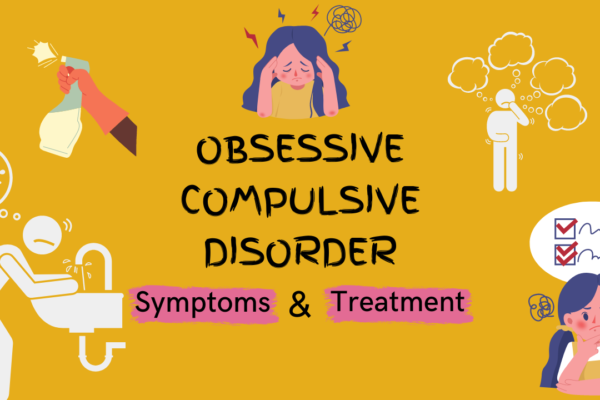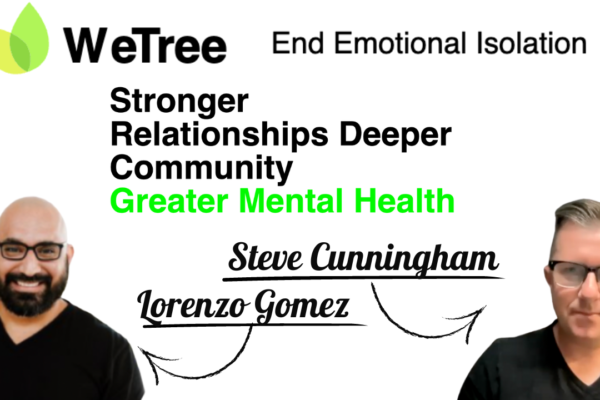Table of Contents
How To Cope With Depression In 12 Proven Steps: Step 7
How To Overcome Barriers To Healthy Activities
This post discusses the third set of skills for learning to cope with depression through managing barriers to healthy activities. In the previous post, we discussed the importance of planning new activities ahead of time and finding balance among activities and support. Now that you have learned some techniques for diversifying your approach to activities, it is time we move on to problem solving barriers to accomplishing planned tasks.
In this post I will cover:
- How to identify obstacles to healthy activities.
- How to work around and address these barriers.
- How to find balance in your activities to optimize your quality of life.
Before reading on, be sure to review the skills discussed in my previous post, How To Cope With Depression in 12 Proven Steps: Step 6.
Tackling Barriers to Healthy Activities
When it comes to problem solving barriers to making actionable steps toward your activity goals, we must first put on our detective hat and attempt to identify any anticipated obstacles that we may encounter in our efforts.
STEP 1: The best place to start is to list the planned activity and then use your self-talk to hone in on language you use to describe the reasons that you cannot accomplish your goal under your current circumstances.
Examples include phrases like: “I would do blank, but …., I cannot get to that because….” which can translate into things like: “I would go to the gym after work, but I have to get home and do homework with my kids.” The problem is already labeled in the justification for not doing the activity. The key here is to use that negative language as a jumping off point to begin problem solving.
We can begin to problem solve the identified barrier by first looking at our goal in more flexible terms. Ask yourself, “why is BLANK/going to the gym, important to me?”. If you do some digging, you will likely find that the gym represents a value-based goal, such as exercise. Then you can ask yourself, why is exercise important to you? Then, why is attending to your health important to you? Getting the feel for it?
STEP 2: Now that you have the goal laid out in flexible terms in accordance to its value, you can begin to brainstorm potential solutions around it.
The trick here is to not overthink it. Just list ideas, and do not place any value/judgements on them just yet (“good/bad” ideas); just list them.
- Go for a walk on your lunch break vs waiting until after work.
- Go for a walk after kids are in bed.
- Workout in the garage after doing homework with the kids.
- Lift weights or ride stationary bicycle while your child reads to you.
- Get in a workout before the kids wake-up in the morning (get up earlier).
STEP 3: Now you get to place some value on your ideas. Start with the one that makes the most practical sense in your situation, you may even be able to combine some of your ideas together.
STEP 4: Trial and error. Put your ideas to the test of life and rate them for ease and payoff. Also, if you run into additional barriers, be sure to take note as it may come in handy later.
STEP 5: If your initial idea does not pan out, discard it and try the next, and continue this pattern until you discover what approach best fits into your life rhythm (note: rhythms change and you will need to tweak things to stay in step with life’s demands).
Goal Pacing
This is one of my all time favorite productivity skills. It reminds me of one of my favorite quotes, “Begin With the End in Mind”, which Stephen Covey lists as his second “Habit” in his book, “7 Habits of Highly Effective People.”
When thinking about healthy activity goals, it helps to start with the ideal activity, and then break it down into actionable steps. The reason that this is so effective, is because our energy, health, time and circumstances change and are not static, such as in our minds eye, when we are predicting our schedules. Goal pacing is a crucial element in addressing barriers to healthy activities.
A great example for this skill is the activity of exercise. If your ideal goal is to go to a spinning class three times a week at 5:30am, then you would start considering the next best thing from your idea, and the then the next best thing from that and so forth.
This could look something like: Spinning at 5:30am before work-spinning at 6:00pm after work-Spinning on the weekend-riding my bike around the local park-riding my stationary bike at home to youtube exercise video after kids are in bed.
You could even scale it down more from spinning to less intense types of exercise, depending on your energy level, such as jumping jacks, jump rope, walking, lunges, squats and sit-ups.
Take note however, that scaling your goals does not mean that you set loose goals. It is still important that you commit to a set time that makes sense with a given activity. This means that you plan ahead for multiple scenarios.
Finding Balance
Okay, I am going to level with you right now. There is no such thing as absolute balance on our lives. By this I mean we can be intentional on how we are investing our time across various life domains, which are often dictated by our needs and obligations, but it is not realistic to think that you can commit to such an even distribution of your time that everything gets equal attention; if you do, than you are likely to end up feeling down because you did not meet the standard that you set, which was unrealistic to begin with.
How we chose to spend our time has direct correlation with how we fell about life and ourselves. So, it is worth taking a periodic pause to assess how we are spending it across our life domains to see if we could be making more efficient decisions.
STEP 1: Consider your responsibilities: List the things that cannot be ignored or neglected (work, cooking, cleaning, laundry, kid’s homework etc…) . These are categories that you will come back to when trying to find balance in your time.
STEP 2: List possible learning activities.
STEP 3: List self-are activities.
STEP 4: List possible meaningful activities.
The majority of folks manage stress better, feel more content with life, and are most productive when they feel that they have a sense of balance among all the domains listed above. This allows them to better problem solve barriers to healthy activities They feel they are thriving in their various roles, such as provider, spouse, parent, employee, boss etc…. They feel that they have a good handle on their work/life balance.
Practice
Activities are not all created equal, and take on different forms and various demands on our time, energy and schedule. For example, doing homework with your child may take more time out of your day than cooking dinner. So, to be fair, consider the cost/weight of an activity, not just trying to balance the numbers.
Make your own list:
- Make a list of the varied activities that you plan to do this week.
- Now assign the amount of time that you think each activity will take.
- Look at your calendar for the week.
- See if you can balance the weight/time of each activity across the week.
- The trick here is to try to not overload any one particular day.
- You will likely find that you will struggle to fit in everything.
- Prioritize your activities across the life domains that we discussed.
- Try to not leave any particular domain neglected.
- Now roll the leftover activities into the following week’s schedule.
Pleasure Predicting
A fundamental problem with depression, is that it interferes with our ability to accurately anticipate the level of satisfaction we will derive from a given activity. This creates all too common barriers to healthy activities.
This is at the root of social isolation, a common and detrimental symptom of depression. If sustained, social isolation lends toward a state of anhedonia (entire loss of interest in activities that were formally enjoyed).
We can disrupt this pattern in five steps:
- STEP 1: Commit to a potentially enjoyable activity and write it down.
- STEP 2: Consider how you can state the planned activity to take place under the most ideal circumstances for a positive outcome. This may include things like time of day, your favorite mall or movie theater, doing it alone with others, in certain weather if an outside activity, etc…
- STEP 3: Next, rate your anticipated level of satisfaction for the activity on whatever scale makes sense to you (1-10, 0-100%, grade, emoji).
- STEP 4: Do the activity, even if you do not think you will enjoy it.
- STEP 5: After the activity has ended, rate your level of actual satisfaction.
Key Points
- Barriers to healthy activities my seem discouraging, but there are usually ways to problem solve around them. Things are not as impermeable as they seem at first glance.
- As you become more active and grow your sense of competence in being proactive again, be mindful to identify possible barriers to your activities, and use these skills to mitigate the creation of new ones.
- Use the goal pacing technique to scale your tasks into actionable steps.
- Seek balance in your commitments.
- Utilize the pleasure predicting technique to get ahead of anhedonia.
Practice
- Use the mood scale tool to keep track of your mood.
- List the number of healthy activities you engage in very day.
- Chose one activity from the four types discussed (enjoyable, value-based, self-care, and educational); do them.
- Pleasure Predicting: Rate anticipated satisfaction before an activity, and actual satisfaction after.
- If you find it challenging to engage on a healthy activity, use the skills discussed (problem solving, goal pacing, pleasure predicting and balancing) to address obstacles.
Looking Ahead
- Learn how to leverage healthy activities to increase goal oriented behavior.
Feedback
- What did you find helpful from this post?
- What skills have you learned in this series of posts that find most effective in improving your mood?
- What suggestions would you have for others battling depression when it comes to planning activities?
It is my mission to equip you with valuable and effective coping skills and clinical interventions, to improve your mood, be more productive and improve your quality of life, so you can do more, and worry less.
ASK: If you have a question you’d like me to answer here on the blog (even if you think it’s a silly one!), please use the form on the CONTACT ME page, or the comment section below. I would be happy to take a poke at it and provide a long form answer when appropriate.
SHARE: Also, be sure to share it with a friend, as there is still a lot of work to be done in raising mental health awareness.
SUBSCRIBE to get your FREE MOOD TRACKING TOOL and quick Mental Health Hacks in addition to this newsletter. Sign-up with the form below.
Recommended Reading
Heads up: This article/page does contain affiliate links to products sold on Amazon, which I recommend in the context of this discussion, because they have proved to be helpful to me and/or my clients. As an Amazon Associate I earn from qualifying purchases by way of commission at no additional cost to you.

NEED CRISIS HELP? If you need immediate crisis help with your depression, you can call the National Suicide Prevention Lifeline at 1-800-273-8255 or text “START” to 741-741
OUTSIDE THE UNITED STATES: See International Suicide Hotlines
WHERE TO FIND MENTAL HEALTH HELP:
-NAMI Referral Helpline: 1-800-950-6264
-California’s Statewide Mental Health Helpline: 1-855-845-7415
The fundamental coping skills for depression being covered over the next several posts are derived from an evidenced-based practice of psychotherapy known as Cognitive Behavioral Therapy (CBT), in which I am certified to practice by the Academy of Cognitive Therapy. For those who are not familiar with theoretical models or therapeutic interventions, an evidenced-based practice (EBP), is a term that describes “a best practice”; one that has been tested and researched and shown to be an effective treatment for a specific condition with results that are sustainable (the scientific method). Aaron T. Beck is the father of Cognitive Behavioral Therapy, and the skills discussed in this series of posts are derived from his work (and his cohorts) which are referenced at the end of this article.
References
Group Cognitive Behavioral Therapy for Depression:-Jeanne Miranda, Ph.D; Stephanie Woo, Ph.D.; Isabel Lagomasino, M.D., M.S.H.S.; Kimberly A. Hepner, Ph.D.; Shelley Wiseman, B.A.; and Ricardo Muñoz, Ph.D. Revised August 2006.
admin
Latest posts by admin (see all)
- Thriving with Autism and ADHD: Expert Strategies for Managing Burnout - April 22, 2024
- Serial Killer Spotlight: Dr. Caparelli’s True Crime Analysis - April 14, 2024
- Donna’s Law: Stop Gun Suicides - March 22, 2024









